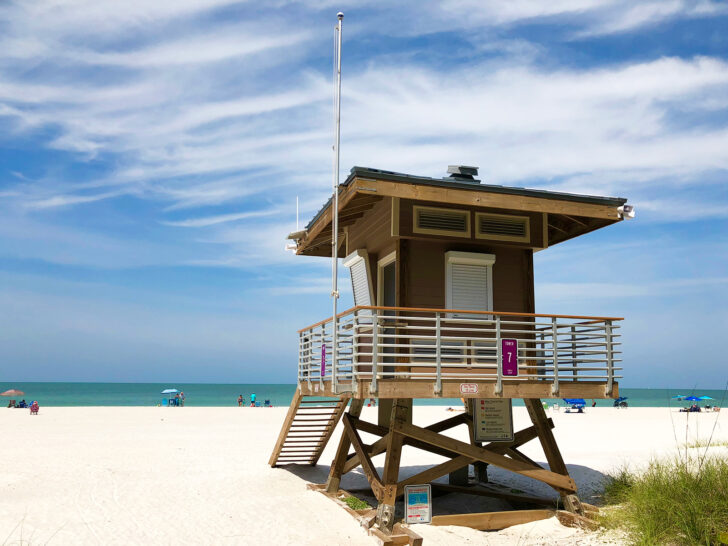We were in our beloved Anna Maria Island over Thanksgiving week. Even though the beach was busy with locals and tourists, I noticed a trend in the lifeguard stations. Only about every 4th station was attended. Where in other times when we’ve been, not only is every station open and operated, there are beach patrols running up and down the sugary white sandy beaches, keeping watch over everything and everybody as much as possible. How could they still let the beaches be open without dozens of lifeguards present watching over everything and everybody? How were people still able to have a good time and make memories, even though there was a risk of possible danger? How come people weren’t drowning and needed to be saved left and right, even though there were some good sized waves, stingrays and jellyfish present, and rip currents a few of the days?
Our Leadership can feel much like being a lifeguard. Many leaders fall into the “lifeguard syndrome”, feeling the need to rescue every member of their team at every turn. While the intentions may be noble, it can create a dependency that stifles individual and collective growth. You can’t be everywhere all the time, and you have to let your people “swim” at their own risk if they are going to grow and flourish. If you’ve got a bit more “hazardous” area of your life and/or in your organization, you might choose to watch this a bit closer, but you can’t just “close it down” when you are not around. Lifeguards are there to alert of dangers present, and are willing to jump in and help if somebody is in need, but they don’t just stop everything in the wake of rougher waters.
Lifeguards embody qualities that are essential for leading and growing others. If you are a parent, this is especially true with our children. Much like how lifeguards scan the water for potential dangers, effective leaders remain vigilant and aware of the needs of those they guide. This simply means just being alert and aware of both the explicit and subtle signals of those under your care. By being aware of your surroundings, not necessarily being all places at all times, you can anticipate challenges and proactively address them before they become overwhelming.
Lifeguards are put through massive amounts of training to equip themselves with the skills needed to handle various situations. As leaders, continuous learning and development are crucial. Just as we invest in our own growth and knowledge, and encourage those around us to do the same, we are setting an example of continuous improvement, and creating a culture of learning and resilience for when the “dangers” of leading come our way!
Lifeguards use clear and concise communication to convey important information to swimmers. Like flag colors to alert of water safety, apps on our phone that show rip currents and hazards, or posted signs to alert beach goers of concerns. Similarly, effective leaders communicate openly and transparently. Whether it’s providing feedback, setting expectations, or expressing appreciation, clear communication builds trust and fosters a positive environment for growth for those under our charge.
Lifeguards deal with distressed swimmers. As leaders, we deal with distressed employees, dissatisfied clients, children that are dealing with adversities at school or with sports teams, friends that are going through stressful situations, or as a spiritual leader, people dealing with calamities within the church.
Some people are so afraid of swimming at the beach or in a pool without a lifeguard present, they won’t even go anywhere near the water. Do you have employees like that? They call you 10 times a day to ask questions because they are afraid to make a mistake? Even worse, do you call your people 10 times a day to constantly check up on them because you are worried they might make a mistake? If we don’t lead and train up our people to “swim” safely and comfortably and effectively without having to be there constantly to watch over them, how are they ever going to grow when not in our presence? The answer… You can’t! You have to let them go and make decisions and trust the process. Are they going to make mistakes? Yep! Are they going to need help and guidance sometimes? Yep! If they go out too far past the safety buoys, you might need to give them an alert of the dangers present, but at least they are comfortable enough to give it a try! That is where the growth happens!
Ocean conditions can change rapidly, requiring lifeguards to adapt quickly. Leadership is absolutely no different. If today is a calm, still day, tomorrow might be treacherous conditions with even more people present then today. You can’t constantly be in all places to protect everybody! We have to be open to change and embrace flexibility to allow you to navigate the ever-changing currents of life and leadership. Teach your people the value of adaptability and show them that challenges are opportunities for growth! In the vast sea of life, adopting a lifeguard’s approach to leading and growing others can provide a solid foundation for success. Through proper vigilance, preparation, clear communication, adaptability, empathy, and teamwork, you can navigate the waves of leading with confidence. Just as a lifeguard ensures the safety of swimmers, you too, can play a pivotal role in guiding and nurturing the growth of those entrusted to your care, whether at home or in our organizations, and not being everywhere, all the time! True leadership goes beyond saving others. It’s about empowering them to navigate their own waters.
Leadership is not about swooping in to rescue everyone from their challenges. It’s about providing the tools, guidance, and support for individuals to overcome obstacles on their own. Empowerment breeds resilience, the key ingredient for long-term success!

